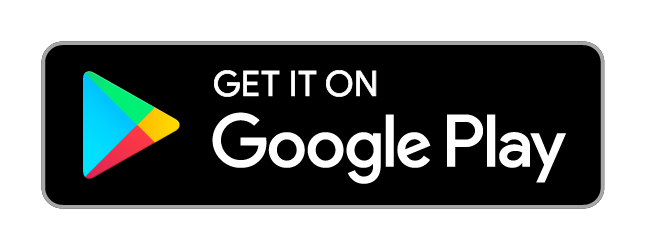Lately, more people are beginning to question the idea that pharmaceuticals are the only path to relief. There’s a growing movement toward finding alternative ways to manage pain—methods that support the body rather than just numb the symptoms. Some of the most effective tools don’t come with warning labels or refill limits; instead, they originate from holistic practices, hands-on therapies, and even subtle changes to your daily habits.
The Drawbacks of Medication-Dependent Pain Relief
It’s no secret that prescription painkillers have played a significant role in how pain is treated, especially in the U.S. But while these medications can provide temporary relief, they often come with a hefty price, both physically and mentally.
Many pain medications, especially opioids, are intended for short-term use. When used over a long period, they can lead to dependence, tolerance, and in some cases, addiction. Even non-opioid medications like NSAIDs and corticosteroids can carry risks if used too frequently, including stomach ulcers, kidney issues, and long-term inflammation.
Beyond the physical side effects, there is also a psychological toll. Relying on medication alone can create a cycle where you never truly address the source of the pain, only its symptoms. It can become a loop of chasing short-term comfort without ever finding long-term solutions.
That’s where alternative and complementary therapies start to shine. Instead of masking pain, these approaches aim to understand and correct the underlying issues. And increasingly, patients are looking for precisely that.
Exploring Manual and Holistic Approaches to Pain Relief
So, what’s out there besides medication? Quite a lot. One of the most promising shifts in pain care is the resurgence of manual therapies—hands-on techniques that work with your body to realign, restore, and reset.
Take massage therapy, for example. It’s not just a luxury spa treat—it can reduce muscle tension, improve circulation, and support recovery from chronic conditions. Chiropractic care, too, has evolved to focus more on function and holistic alignment than just cracking joints. These therapies help the body do what it’s naturally meant to do: heal.
Another rising star in this space is osteopathy. Osteopathic physicians employ gentle, targeted manipulations to enhance mobility, alleviate stiffness, and restore balance throughout the body. Many people are now seeking out osteopaths for pain management because of their whole-body approach—one that doesn’t separate the site of pain from the rest of your health story.
What makes these methods especially compelling is that they often complement each other. Someone might see a massage therapist for muscle tension, a chiropractor for alignment, and an osteopath for deeper systemic balance—all working together to improve pain from multiple angles.
And let’s not forget one of the most significant upsides: these treatments generally come with far fewer side effects than long-term medication use. Instead of trading one problem for another, you’re supporting your body’s natural repair systems.
Lifestyle Changes That Make a Difference
One of the most underrated tools in your pain management toolbox? Your everyday habits. While it might not sound groundbreaking, the truth is that what you do outside the doctor’s office often has the most significant impact on how you feel.
Start with your diet. Inflammation is a major driver of chronic pain, and certain foods can either fuel it or fight it. Diets rich in processed sugar, refined carbs, and trans fats tend to stoke inflammation, while whole foods—like leafy greens, berries, fatty fish, and nuts—have the opposite effect. Switching up what’s on your plate isn’t just about weight management; it’s about giving your body the nutrients it needs to heal.
Movement matters too. If you're dealing with pain, the idea of exercise might feel counterintuitive—but gentle, consistent movement can help reduce discomfort. Low-impact activities, such as walking, swimming, and yoga, support joint flexibility, boost endorphins, and improve circulation —all of which contribute to pain relief. Even something as simple as regular stretching can be a game-changer.
And don’t sleep on… well, sleep. Poor sleep can heighten pain sensitivity and slow down your body’s recovery processes. Posture and ergonomics also play a role here—slouching at your desk all day or sleeping in an awkward position can quietly create tension that builds up over time.
When you zoom out and look at the bigger picture, it’s clear that your lifestyle is either helping or hindering your pain. By making small, consistent adjustments, you can create an environment that allows your body to truly start recovering.
The Role of Mental Health and Mind-Body Techniques
Pain isn’t just physical—it’s emotional, mental, and even spiritual at times. Chronic pain, especially, tends to blur the lines. It wears you down, affects your mood, and can even alter how your brain processes discomfort. That’s why treating pain requires more than just addressing the body; you’ve got to care for the mind, too.
Techniques like mindfulness and meditation might seem a little “out there” if you’ve never tried them, but a growing body of research backs them. Mindfulness-based stress reduction (MBSR), for instance, has shown promising results in helping people manage conditions like fibromyalgia, back pain, and migraines. These practices teach you how to shift your relationship with pain—how to notice it without spiraling into panic or frustration.
Cognitive Behavioral Therapy (CBT) is another powerful tool. It helps people reframe negative thought patterns that can exacerbate pain. By changing the way you think about your pain, you can sometimes change the way you experience it. It’s not about pretending the pain isn’t real; it’s about interrupting the cycle of stress and fear that often comes with it.
Then there’s breathwork, guided imagery, and even journaling. These may seem subtle, but they offer a surprising sense of control—something that chronic pain often tries to steal from you. They help you build resilience and stay grounded, even on tough days.
Addressing mental health doesn’t mean you’re saying the pain is “in your head.” It means you’re acknowledging that your brain and body are deeply connected, and healing one can help the other.
Finding the Right Combination for You
One of the most important things to understand about pain is that it’s incredibly personal. What works for one person may not affect someone else. That’s why the most effective pain management strategies usually involve a bit of experimentation—and a lot of patience.
The real magic often happens when you combine approaches. You could pair physical therapy with acupuncture, or massage therapy with meditation. Some people respond well to movement-based therapies, such as yoga or Pilates, while others find their breakthrough in a simple change in diet or sleep habits. It’s not about choosing one thing over another—it’s about building a toolkit that fits your life.
Working with a supportive care team can help you connect the dots. Look for practitioners who are open to integrative care and view your treatment as a collaborative effort, rather than a one-sided prescription. When you’re working with people who understand the whole picture, not just the pain point, you’re much more likely to find relief that sticks.
The goal isn’t just to feel better for a few days. It’s to build a lifestyle and support system that helps you stay active, present, and in control without constantly reaching for a quick fix.
Conclusion
Pain may be a constant in life, but living in discomfort doesn’t have to be. While medication has its place, it’s far from the only answer. By expanding your view and exploring a broader range of therapies—from hands-on treatments to subtle shifts in your daily habits—you open the door to a more sustainable kind of healing.
No two journeys are the same, but one thing’s for sure: when you take an active role in your care, the possibilities for relief grow. Whether you're just beginning to look outside the pill bottle or already exploring new avenues, you're not alone—and the options ahead are far more promising than you might expect.



































